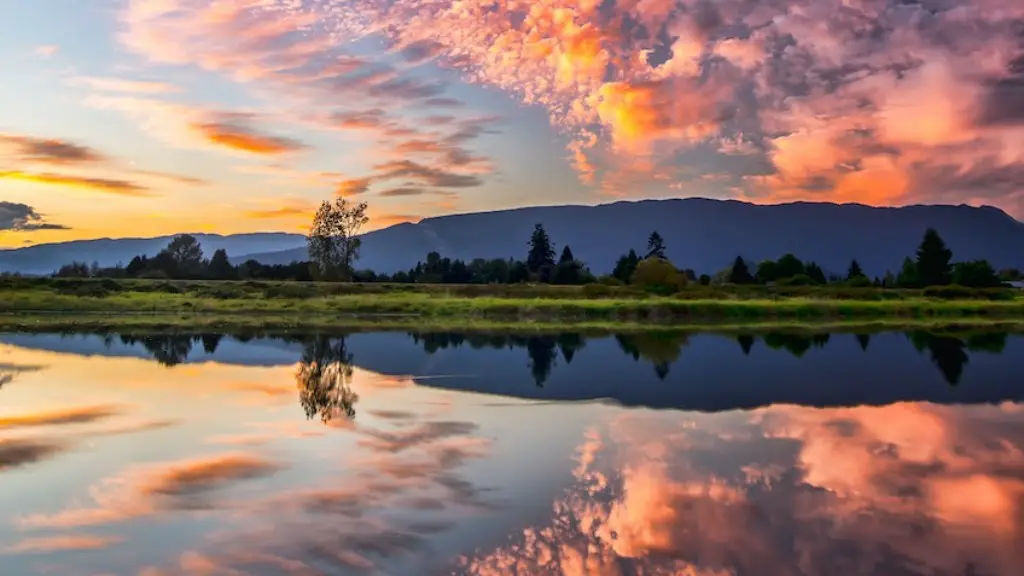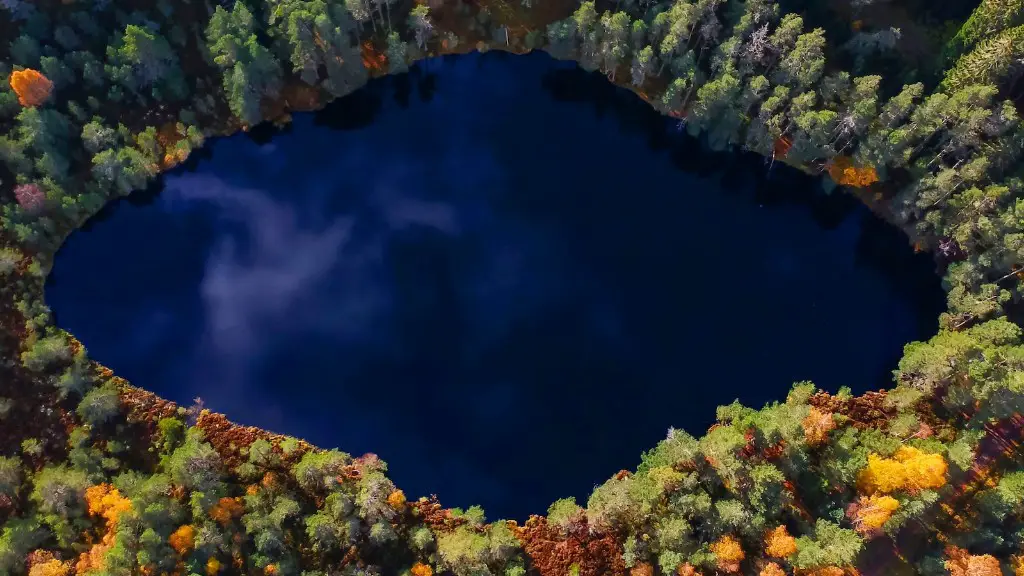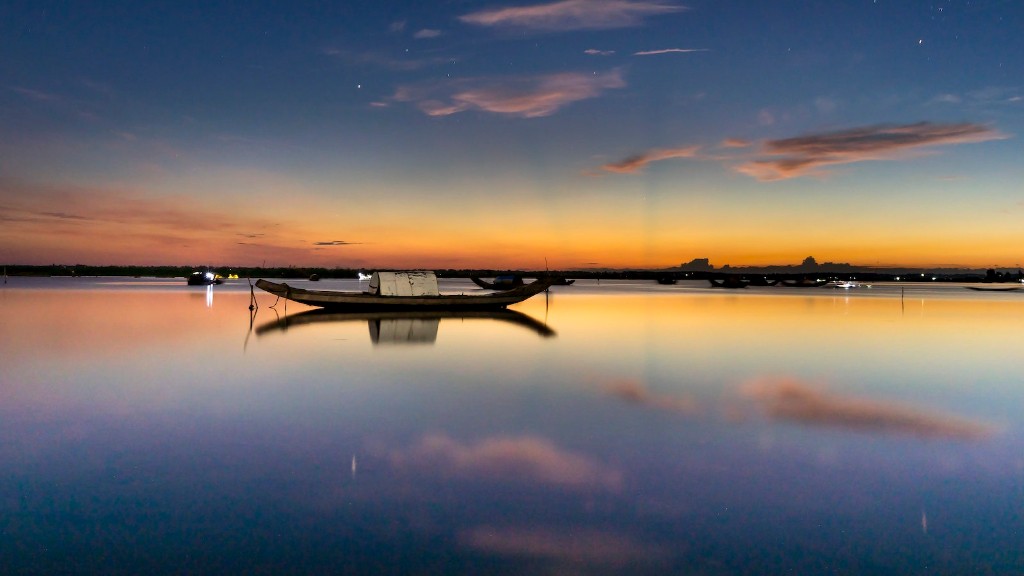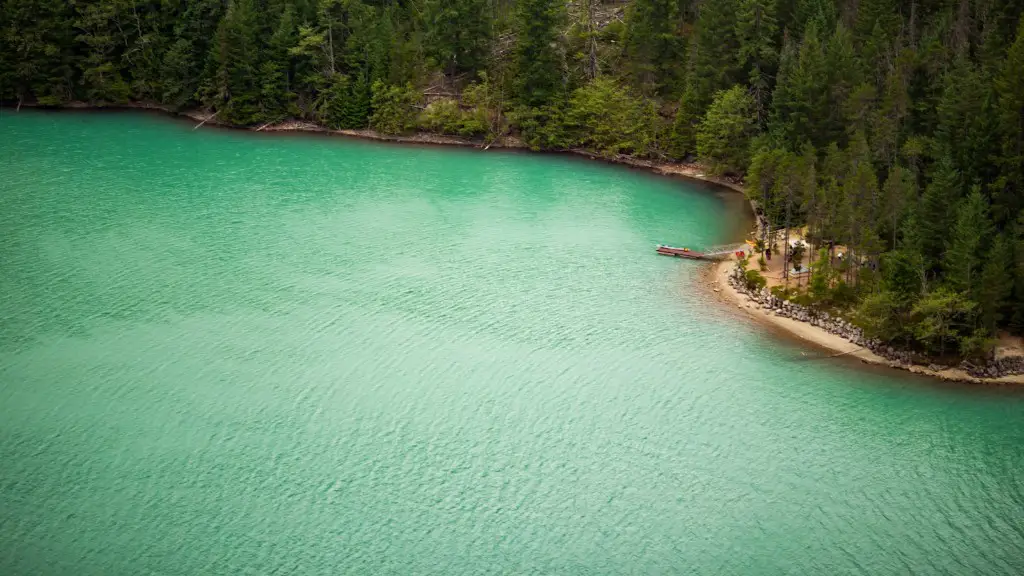Nature and Location
Lake Titicaca, situated on the border between Peru and Bolivia, is the largest lake in South America, and is the highest navigable lake in the world. It is situated in the Andes Mountains, some 12,507feet above sea level. It totals 8,372square kilometers in area, with a maximum depth of 279meters.
It is formed by two large basins, Lake Chucuito and Lake Grande, whihc are connected by the Strait of Tiquina. It is fed by numerous rivers that flow down from the Andes, and its waters are rich in nutrient and life. The lake is also home to a variety of animals, including some endemic species such as the Titicaca water frog, and a wide variety of birds and fish.
Unique Ecosystem
The lake has an unusual and unique ecosystem, which is threatened by human activities. The delicate balance of its waters is disturbed by pollutants from agricultural activities, wood burning and steel industries. Deforestation has been reducing the flow of the rivers that feed the lake, and climate change has resulted in a decrease of precipitation in the area.
Scientists are monitoring this situation closely as the lake is home to numerous endangered species and is an important source of water for the people living in the region. Its waters are also used for irrigation, fishing and power generation.
Cultural Importance
Lake Titicaca has a profound cultural and religious significance for the region. It is the birthplace of the Incas, the ancient civilization that inhabited the region since the pre-Columbian era. The lake and its surroundings are full of archaeological sites, and have been immortalized in numerous stories and legends.
It is a center of pilgrimage for the local people, and was declared a biosphere reserve by UNESCO in 1998. This has helped in the conservation of its unique and fragile ecology, but most of the regions riches are still being threatened by human expansion and development.
Fascinating Communities
The lake is also home to some of the last surviving indigenous cultures in South America. The Uros people, who inhabit the floating islands made of reeds, are among this unique blend of modern and ancient cultures.
The islands are man-made, made out of the same reeds that grow abundantly in the lake. They move with the wind and serve as a home to the Uros people, who have been inhabiting the lake for thousands of years.
The Uros are also renowned for their art and craftsmanship, which adds to the lake’s cultural richness.
Economic Activity
Lake Titicaca is an important source of economic activity for the region. Fishing is one of the main sources of living, and the lake is also used for transportation, as well as tourism.
Lake Titicaca attracts a large number of tourists each year, and is a major tourist destination in Peru and Bolivia. Visitors come to explore its unique ecosystem and cultural heritage.
Conclusion
Lake Titicaca is an important lake in South America, with a unique and fragile ecology, and a rich cultural heritage. It is an important source of economic activity for the region, and attracts thousands of tourists each year.



